Review for The Last Starfighter
Introduction
I think this might have been the longest I have waited to buy a movie on home media. What makes this all the stranger is that I love The Last Starfighter, and have done so since I first saw it on VHS during one rainy washed out games lesson in school. The first chance I got thereafter, I meticulously taped a TV broadcast version, and nursed it through several plays, and then when I had the chance, I transferred it to DVD-R, and re-watched that. The odd thing is, I’ve always wanted it on tape, or on DVD, but never got around to it. After I got my Blu-ray player, I waited patiently for it to get an HD release, but I don’t think it ever got one in Region B. Just like The Abyss, and True Lies earlier this year, it took a 4k re-master and release for it to finally a UK Blu-ray alongside a UHD, this time courtesy of Arrow Video.
The Last Starfighter really is worth some attention, not least for its place in film history. It’s 1984, and this is the first, mainstream feature film to have a significant amount of CGI footage. At the time they made this, they were inventing the technologies that would lead to Terminator II and Jurassic Park. Way back in the early seventies, Westworld used computers to create the pixellated POV android shots. 1977’s Star Wars used early computer animation for the Death Star attack run briefing room imagery. 1982 saw two seminal CGI moments. First there was the movie whose premise screamed CGI, TRON with its tale of a man trapped in a computer, although surprisingly most of the film was accomplished with traditional 2D cel animation, with just a couple of CG scenes in the whole film. Then Star Trek II: The Wrath of Khan featured a 3D CG sequence for its Genesis Effect simulation. 1985 would see the first CGI character integrated into live action, an animated stained glass knight in Young Sherlock Holmes.
And in between, in 1984, there was The Last Starfighter, where all of the space scenes were rendered on a bank of Cray X-MP supercomputers. Back then, in the age of the Spectrum and Commodore 64, we all wanted Cray supercomputers, not knowing what a supercomputer was, or what it did, just imaging the kind of games it would play. It’s worth mentioning that the average smartphone is more powerful now, and that the Babylon 5’s pilot movie would accomplish its effects on a network of Commodore Amigas just 9 years later. What was unprecedented was just how much of The Last Starfighter featured CGI. It wasn’t just a quick flash, and no context was given to explain the images as an unreal representation, these images were the real world of the movie, and we had to suspend our disbelief to accept them. As mentioned, your smartphone can do better now, so it will be interesting to see if The Last Starfighter still holds up.
The last thing that Alex Rogan wants is to spend the rest of his life in the trailer park his family calls home. But the world seems to be conspiring against him. The only escape he has is the Starfighter arcade game outside the local convenience store. But this is no ordinary arcade game. It’s actually a test, and the day Alex beats the game, he passes the test. The next thing he knows, a flamboyant man named Centauri shows up with the offer of a lifetime; to be a Starfighter for real!
The Disc
The Last Starfighter gets a 2.39:1 widescreen 1080p transfer sourced from a new 4k restoration. The audio comes in the original theatrical stereo format, DTS-HD MA 2.0 English, and there is also the DTS-HD MA 4.1 Surround English that accompanied the 70mm screening of the film. Naturally you get the usual DTS-HD MA 5.1 Surround upmix created for modern cinema sound, all with optional SDH English subtitles. It’s a great transfer of a classic film, clear and sharp and free of any signs of age, print damage or visible compression. Detail levels are strong, contrast is excellent, and colours are rich and consistent. The CGI very much looks of its age, but The Last Starfighter has a neat trick, in the real-life Star Car that Centauri drives, looks enough like CG in real life that when it transitions to CGI, the jump isn’t too obvious. I went with the 4.1 audio and it’s pretty good, nice and immersive, if the volume is a little low. The dialogue is clear throughout, while Craig Safan’s iconic score still has the intended uplifting effect.
Extras
You get one disc in a BD Amaray style case, with a reversible sleeve featuring two pieces of promo artwork for the film, one original, and one newly commissioned. It’s all wrapped in an o-card slipcover. The disc boots to an animated menu, and you’ll find the following extras.
Audio commentary with Lance Guest and Jackson Guest
Audio commentary with Mike White
Maggie’s Memories: Revisiting The Last Starfighter (9:28)
Into the Starscape: Composing The Last Starfighter (12:20)
Incredible Odds: Writing The Last Starfighter (9:27)
Interstellar Hit-Beast: Creating the Special Effects (10:14)
Excalibur Test: Inside Digital Productions (7:46)
Greetings Starfighter! Inside The Arcade Game (7:24)
Theatrical Trailer (2:47)
Theatrical Teaser (1:33)
You’ll also find a promotional art card from Arrow, and a 40-page booklet with writing on the film from Amanda Reyes and the late Greg Bear.
Note that the US Region A locked release of the film, also from Arrow has even more extra features than this UK release, including image galleries, and a making of featurette ported from the original Laserdisc release. But we do get two out of the three Easter Eggs. Yes, we’re back to the days when the UK got hand me down extra features.
Conclusion
It’s odd, but I get a real Ready Player One vibe from The Last Starfighter now. I shouldn’t, given that one is a film set in virtual reality, and the other is set in the real world, but both films centre on unlikely young heroes, saving the day through the medium of videogames. And then there is that inescapable nostalgia for the 1980s, although it’s ironic that of all the 80s references that pop up in Ready Player One, there is no sign of a Gunstar anywhere. But after forty years, The Last Starfighter still works, despite that nascent computer generated imagery older than most digital effects artists working in the business today. It’s because the story is so good, the characters so appealing that it makes it effortless to just suspend disbelief and accept the world this film creates.
There is also the epic level of wish fulfilment, the idea that you could play games so well, that your talent will be recognised and rewarded. It’s a fantasy that still persists all these decades later, years after we outgrew those moments when our parents would nag us to unplug our home micros and consoles from the living room TV, or unplug the dial up modem so that they can make a phone call. They never realised how important it was to beat our high scores on Pinball Fantasies. And here, Alex Rogan is so damn good at Starfighter that the whole trailer park turns out to cheer him on as he shatters the high score.
All those years of watching the TV version, I never realised just what had been cut out. I had forgotten what the rental VHS had looked like, and until I started watching the Blu-ray, I was thinking that the 12 rating was harsh. But there are a couple of violent moments, a bit of creepiness here or there, that edge it out of the kids adventure bracket and shift it to the family movie. The story is good, the action really works well, but where the charm lies is with the film’s humour. The shenanigans with the Beta Unit that replaces Alex while he’s off saving the galaxy turn out to be so entertaining that there were reshoots to add more.
What’s really surprising is that this was pretty much all there was to The Last Starfighter. There are no sequels, no spin-offs, no toys and no Saturday Morning cartoons. There was the usual novelisation, the odd comic, and apparently a table top role-playing game, but for such an iconic eighties film, it missed out on the cash-ins that other movies got on industrial scales. The end credits promise a Last Starfighter arcade machine like the one in the movie, but Atari cancelled development. The one shown in the extra features is a labour of love for its creator, an epic hobby project delivering that arcade machine decades after the end credits told us to look out for it.
I still love The Last Starfighter, and it’s nice to finally own a Blu-ray copy, even after all this time. Normally I’d be extolling the virtues of Arrow’s release, when it comes to presentation and when it comes to extra features, were it not for the fact that Arrow give US audiences even more.
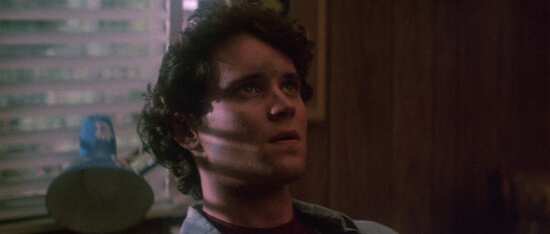
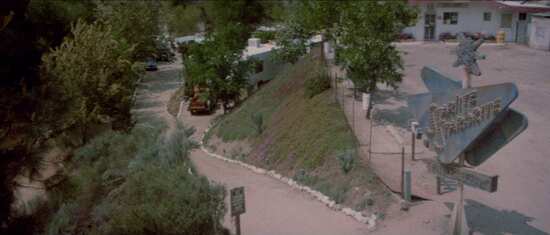
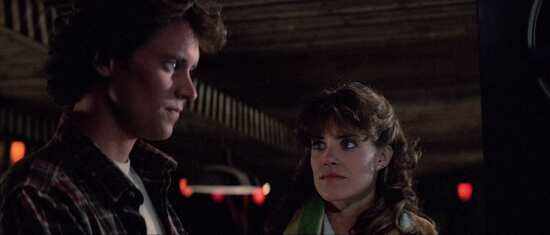
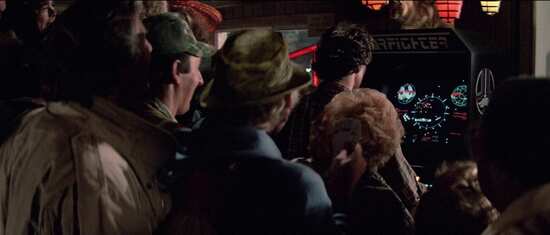
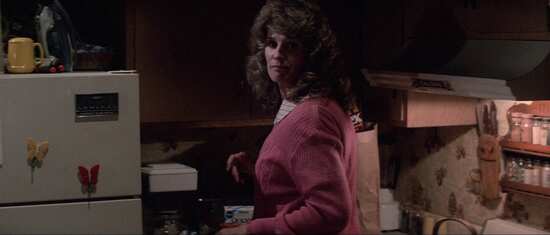
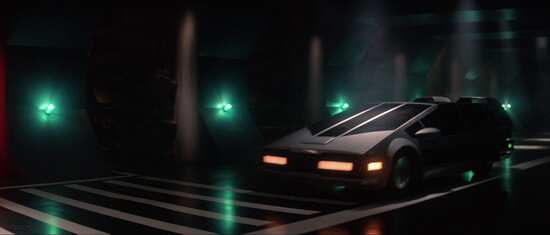
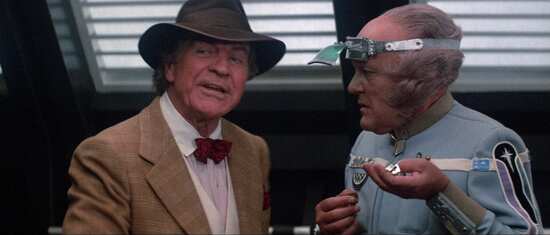
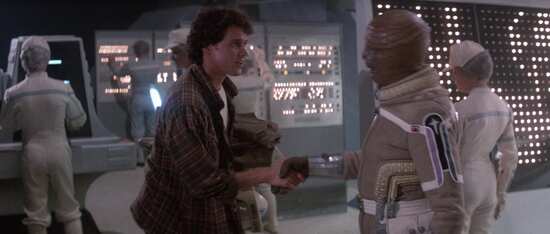
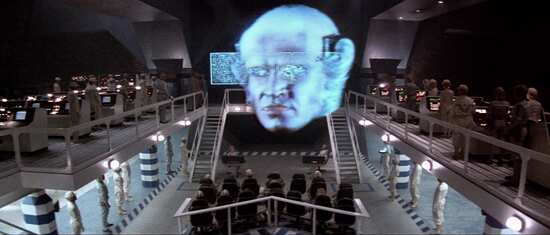
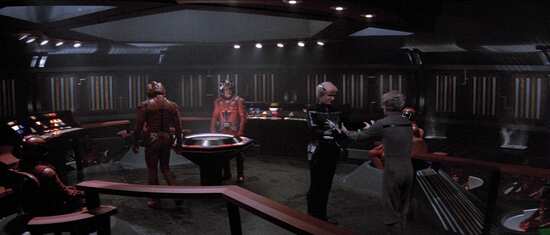
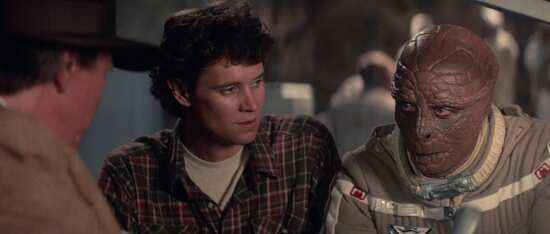
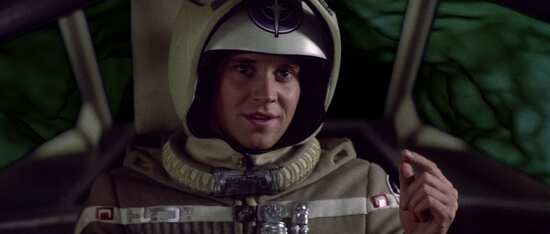
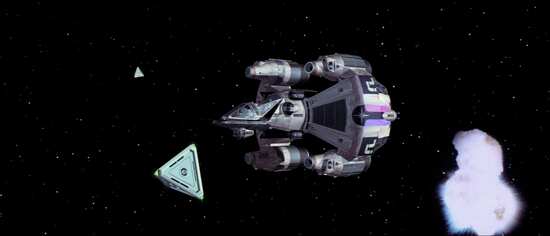
Your Opinions and Comments